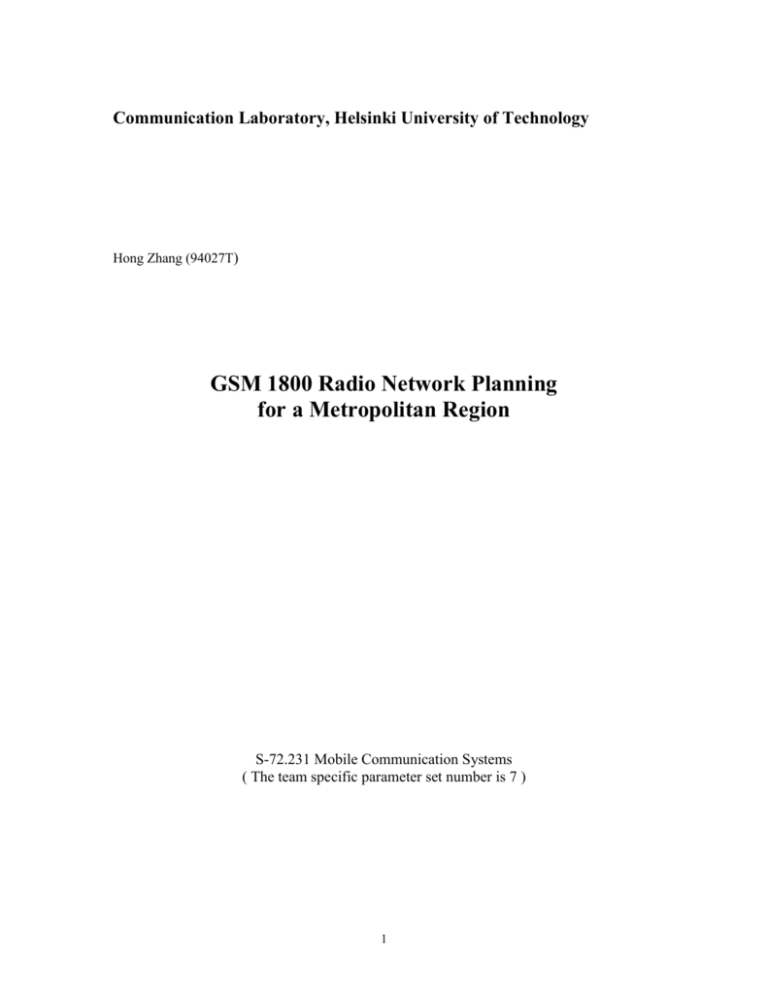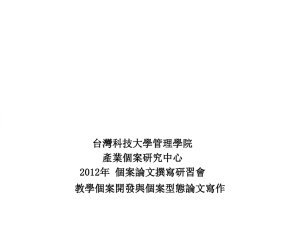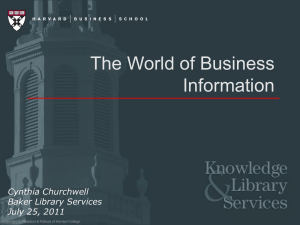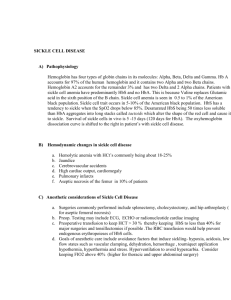GSM Radio Network Planning
advertisement

Communication Laboratory, Helsinki University of Technology Hong Zhang (94027T) GSM 1800 Radio Network Planning for a Metropolitan Region S-72.231 Mobile Communication Systems ( The team specific parameter set number is 7 ) 1 LIST Calculation of maximum cell radius Rmax using maximum base station parameters 3 1.1 The macro cell in the region A ............................................................................. 3 1.1.1 Downlink......................................................................................................... 3 1.1.2 Uplink ............................................................................................................. 4 1.2 The region B ......................................................................................................... 4 1.2.1 Downlink......................................................................................................... 4 1.2.2 Uplink ............................................................................................................. 4 1.3 The region C .......................................................................................................... 4 1.3.1 Downlink......................................................................................................... 4 1.3.2 Uplink ............................................................................................................. 5 1.4 The micro cell in the region A ............................................................................... 5 1.4.1 Downlink......................................................................................................... 5 1.4.2 Uplink ............................................................................................................. 5 2 Capacity plan ................................................................................................................ 7 2.1 Geometry of the service area ................................................................................. 7 2.2 The capacity planning in region A for Macro cell ................................................. 9 2.3 The capacity planning in region B for Macro cell ................................................. 9 2.4 The capacity planning in region C for Macro cell ............................................... 10 2.5 The capacity planning in region A for Micro cell ............................................... 11 3 Coverage planning...................................................................................................... 12 3.1 Area A (macro cell) ............................................................................................. 13 3.1.1 Downlink....................................................................................................... 13 3.1.2 Uplink ........................................................................................................... 13 3.2 Area B .................................................................................................................. 13 3.2.1 Downlink....................................................................................................... 13 3.2.2 Uplink ........................................................................................................... 14 3.3 Area C .................................................................................................................. 14 3.3.1 Downlink....................................................................................................... 14 3.3.2 Uplink ........................................................................................................... 14 3.4 Area A (micro cell) .............................................................................................. 15 3.4.1 Downlink....................................................................................................... 15 3.4.2 Uplink ........................................................................................................... 15 4 Frequency planning .................................................................................................... 17 1 2 GSM 1800 Radio Network Plan for a Metrpolitan Region 1 Calculation of maximum cell radius Rmax using maximum base station parameters antenna gain feeder diameter mast top amplifier antenna height signal outage probability : Fu =90% 2 (1 ab ) 2 -a) b S PRX (R) SFM PS (R) = Q ( )=Q ( ) Fu = PS (R) + e b2 Q( SMF = INVQ (1- PS (R) ). n=4.49-0.655log( hbs ) (macro cell) hbs = 30m, SFM =3.6 dB hbs = 120m, SFM =4.2 dB 1.1 The macro cell in the region A 1.1.1 Downlink conditions: antenna gain : Gbs max =21dBi , Gms max =2dBi feeder diameter : 2_1/4” 26.3db/km mast top amplifier : Gmat =10dB , Fmat =2.0dB antenna height: hbs =30m…..120, hms =1.6m mobile station sensitivity S ms : -100dBm Max base station power level Pbs _ tx : <46dBm The feeder length of base station is: l =10m+ hbs hbs = 30m, l =10m+30m=40m the loss of feeder Lbs _ f = l =26.3* 1800 / 1700 *40m=1.1dB the loss of feeder Lbs _ f = l =3.5dB hbs = 120m, l =10m+120m=130m the combining filter loss : Ac =3dB BS connector & jumper losses: 1,0dB S ms < Pbs _ tx + Gbs max - Ac -1.0- Lbs _ f - L path + Gms max -SMF hbs = 30m, L path <46+21-1.1-1-3+2-3.6-(-100)=160.3dB L path <46.3+33.9log(f)-13.8log( hbs )- A(hms ) +(44.9-6.55log( hbs ))log(R)+ Cm =160.3 R<4.05km 3 hbs = 120m, L path <46+21-3.5-1-3+2-4.2-(-100)=157.3dB L path <46.3+33.9log(f)-13.8log( hbs )- A(hms ) +(44.9-6.55log( hbs ))log(R)+ Cm =157.3 R<7.14km 1.1.2 Uplink The effective gain of the mast top amplifier is: 100.1( Gmta Fmta ) 1 Gmta _ eff = Gmta -10lg(1+ ) 100.1(l Frx ) Gmta _ eff =6.88dB hbs = 30m S bs Pms _ tx + Gmsmax - L path -SMF + Gbsmax - Lbs _ f -1+ Gmta _ eff L path 30+2-3.6+21-1.1-1+6.88-(-102)=156.18Db L path =46.3+33.9log(f)-13.8log( hbs )- A(hms ) +(44.9-6.55log( hbs ))log(R)+ Cm 156.18dB R 3.09 km hbs = 120m Gmta _ eff =7.95dB S bs Pms _ tx + Gmsmax - L path -SMF + Gbsmax - Lbs _ f -1+ Gmta _ eff L path 30+2-4.2+21-3.5-1+7.95-(-102)=154.25Db L path =46.3+33.9log(f)-13.8log( hbs )- A(hms ) +(44.9-6.55log( hbs ))log(R)+ R 5.71 km Cm 154.25dB 1.2 The region B 1.2.1 Downlink, using the same method as for region A to calculate the radius hbs = 30m, R< 10.75km hbs = 120m, R< 21.45km 1.2.2 Uplink, using the same method as for region A to calculate the radius hbs = 30m, R 8.21km hbs = 120m, R 30.44km 1.3 The region C 1.3.1 Downlink, using the same method as for region A to calculate the radius 4 hbs = 30m, R< 39.84km hbs = 120m, R< 93.80km 1.3.2 radius Uplink, using the same method as for region A to calculate the hbs = 30m, R 30.44km hbs = 120m, R 74.94km 1.4 The micro cell in the region A signal outage probability : Fu =90% using COST231 Walfisch-Ikegamipath loss model , the path loss exponent n= (20+ k d )/10=4.8 the service probability at the cell border Ps (R) =0.68 SFM =0.45*6 dB=2.7dB 1.4.1 Downlink The feeder length of base station is: l =2m+ hbs hbs = 10m, l =12m the loss of feeder Lbs _ f = l =26.3* 1800 / 1700 *12m=0.32dB S ms < Pbs _ tx + Gbs max - Ac -1.0- Lbs _ f - L path + Gms max -SMF L path <46+15-3-1-0.32+2-2.7-(-100)=155.98dB L path = L0 + Lrts + Lmsd <155.98dB R=d<0.91km 1.4.2 Uplink The effective gain of the mast top amplifier is: 100.1( Gmta Fmta ) 1 ) 100.1(l Frx ) Gmta _ eff =6.46dB Gmta _ eff = Gmta -10lg(1+ hbs = 10m S bs Pms _ tx + Gmsmax - L path -SMF + Gbsmax - Lbs _ f -1+ Gmta _ eff L path 30+2-2.7+15-0.32-1+6.46-(-102)=151.44dB L path = L0 + Lrts + Lmsd 151.44dB R=d 0.73km 5 Summary of the maximum cell radius Feeder diameter 2_1/4 Mast top amplifier BSAntenna height MSAntenna height BS sensitivity MS sensitivity BS max output power level MS output power level The combining filter loss BS connector & jumper loss The BS antenna gain The MS antenna gain(including feeder and duplex loss The feeder loss SMF Loss(path loss+SMF) The max cell radius in DL The feeder loss SMF The effective mast top amplifier gain Loss(path loss+SMF) The max cell radius in UL Region A (macrocell) 26.3dB/km Gmat :10dB Region B Region C Region A(microcell) 26.3dB/km Gmat :10dB 26.3dB/km Gmat :10dB 26.3dB/km Gmat :10dB Fmat :2.0dB 30m 1.6m -102dBm -100dBm <46dBm Fmat :2.0dB 30m 1.6m -102dBm -100dBm <46dBm Fmat :2.0dB 30m 1.6m -102dBm -100dBm <46dBm Fmat :2.0dB 10m 1.6m -102dBm -100dBm <46dBm 30dBm 3,0dBm 30dBm 3,0dBm 30dBm 3,0dBm 30dBm 3,0dBm 1,0dBm 1,0dBm 1,0dBm 1,0dBm 21dBi 2dBi 21dBi 2dBi 21dBi 2dBi 15dBi 2dBi hbs =30m 1.1dB 3.6dB 160.3dB <4.05km 1.1dB 3.6dB 160.3dB <10.75km 1.1dB 3.6dB 160.3dB <39.84km 0.32dB 2.7dB 155.98dBm <0.91km hbs =120m without using diversity gain 3.5dB 3.5dB 3.5dB 4.2dB 4.2dB 4.2dB 7.95dB 7.95dB 7.95dB 0.32dB 2.7dB 6.46dB 154.25dB 5.71km 151.44dB 0.73km 154.25dB 17.14km 6 154.25dB 74.94km 2 Capacity plan 2.1 Geometry of the service area C 100km Region Type: B A 4km A: city B: suburban C: rural 25km Here using method: Minimum excess capacity with cells extended over region border. L2 L2 2 A Length of street /road network: L 1 2 = LB1 LB 2 L B The orginated traffic: Tij = Fi C pij Toij N ij B= T N / N! N T n / n! n 0 7 8 2.2 The capacity planning in region A for Macro cell 3.15Km 1.15Km 3.15Km A1 A2 A3 A4 Area A cell size: x2 = 16 Km Region A total area Minimum cell number = 1.61 2 9.94 Km 2 = x =3.15 Km RA =3.15/ 2 =2.23 Km Comparing the radius calculated by maximum base station parameters with this radius in part 1: the latter is smaller, so I select the radius according to capacity. In the region A, the vehicle traffic is designed in macro cell, the minimum number of BS is 1.61, but there seems no way to design 1.61 cells, I design 4 BSs. In fact, offered traffic in every cell: T= 2*2*2.84+(3.15^2-4)*0.14=12.19 Erlang 22 TC/BS giving a capacity of 14.9Erlang /BS, using 3 TRXs/BS 2.3 The capacity planning in region B for Macro cell B2 B1 14.3Km A1 A2 A3 A4 1.15Km B3 B4 14.3Km Area B cell size: 9 1.8Km 2 x = Uncovered area in region B Minimum cell number = 585.31 Km 2 2.87 = 204.03 Km 2 RB =14.3/ 2 =10.1 Km x =14.3 Km Comparing the radius calculated by maximum base station parameters with this radius in part 1: the latter is smaller, so I select the radius according to capacity. In the region B, the traffic is designed in macrocell, the minimum number of BS is 2.87, but I design 4 BSs. In fact, offered traffic in every cell: T= (12.5^2-3.15^2)*0.14+(14.3^2-12.5^2)*0.02=21.01 Erlang 29 TCs/BS giving a capacity of 21.04Erlang /BS, using 4 TRXs/BS 2.4 The capacity planning in region C for Macro cell 28.6km C1 C3 35.7km C2 35.7km B2 B1 14.3Km A1 A2 C4 A3 A4 C5 1.15Km B3 B4 1.8Km 14.3Km C6 C7 Area C cell size: 10 C8 Region A total area 2 x = Minimum cell number 9182 Km = 2 4.17 2 = 2199.63 Km RB =46.9/ 2 =33.16 Km x =46.9 Km Comparing the radius calculated by maximum base station parameters with this radius in part 1: the latter is smaller, so I select the radius according to capacity. In the region C, the traffic is designed in macrocell, the minimum number of BS is 4.17, but there seems no way to design 4.17cells, I design 8 BSs. In fact, here the planned side length of cell is 35.7km, Offered traffic in C1,C3,C6,C8 cells: T=t* x 2 =0.02*35.7^2=25.49 Erlang 37 TCs/5TRSs /BS giving a capacity of 28.25Erlang/cell Offered traffic in C2,C4,C5,C7 cells: T=t* x 2 =0.02*35.7*28.6=20.42 Erlang 29 TCs/4TRSs /BS giving a capacity of 21.04Erlang/cell 2.5 The capacity planning in region A for Micro cell 1Km 1Km A1 A2 A3 A4 A5 A6 A7 A8 A9 A10 A11 A12 A13 A14 A15 A16 Area A cell size: x2 = 16 Km Region A total area Minimum cell number = 10.19 2 = 1.57 Km 2 RA =1.25/ 2 =0.89 Km x =1.25 Km Comparing the radius calculated by maximum base station parameters with this radius in part 1: the latter is larger, so I select the radius according to maximum base station parameters. I design 16 BSs. The length of cell side x =1km 11 In fact, offered traffic in every cell: x =1km, R=0.71km 2 T=t* x =18*1^2=18 Erlang 29 TCs/4TRSs /BS giving a capacity of 21.04Erlang/cell Summary of capacity planning region T A_macro B 45 84 81 145 118 288 C A_micro 3 N cell 1.61 N BS 4 R/km 2.87 4.17 10.1 Timpl 2.23 NTCH 88 59.6 4 10.1 116 84.1 8 16 25.24 0.71 264 464 197.16 336.64 Coverage Planning According to service probability and the some other system parameter and the compared cell radius by capacity and max system parameter to calculate the required transmitted power level, antenna gain, eventual use of mast top amplifier, antenna height and DL/UL power level balance. The parameters for every region Feeder diameter ¼ “……2_1/4” Mast top amplifier BSAntenna height MSAntenna height BS sensitivity MS sensitivity BS max output power level MS output power level The combining filter loss BS connector & jumper loss The BS antenna gain The MS antenna gain(including feeder and duplex loss BS diversity gain cell radius Region A Region B (macrocell) 256dB7km…26. 256dB7km… 3dB/km 26.3dB/km Gmat :10dB Gmat :10dB Region C Fmat :2.0dB 30m…120m 1.6m -102dBm -100dBm <46dBm Fmat :2.0dB 30m…120m 1.6m -102dBm -100dBm <46dBm Fmat :2.0dB 30m…120m 1.6m -102dBm -100dBm <46dBm Fmat :2.0dB 10m 1.6m -102dBm -100dBm <46dBm 30dBm 3,0dBm 30dBm 3,0dBm 30dBm 3,0dBm 30dBm 3,0dBm 1,0dBm 1,0dBm 1,0dBm 1,0dBm 21dBi 2dBi 21dBi 2dBi 21dBi 2dBi 15dBi 2dBi 5dB 2.23km 5dB 10.1km 5dB 25.24km 5dB 0.71km 12 Region A(microcell) 256dB7km… 256dB7km…26.3dB/ 26.3dB/km km Gmat :10dB Gmat :10dB 3.1 Area A (macro cell) 3.1.1 Downlink The cell radius R=d=2.23km to calculate the path loss: L path =46.3+33.9log(f)-13.8log( hbs )- A(hms ) +(44.9-6.55log( hbs ))log(R)+ Cm =151.18dBm S ms - Gbs + Ac +1.0+ Lbs _ f + L path - Gms +SMF Pbs _ tx Principle: when needed tx power level exceed available level, improvement is tried in the following order: higher antenna gain, larger feeder diameter, insertion of mast top amplifier in UL, larger BS antenna height Gbs =21dBi Here Gms =2dBi feeder =3/8” hbs =30m 42.02dBm Pbs _ tx let Pbs _ tx =43dBm Pms _ rx = -99.02dBm 3.1.2 Uplink R=d=2.23km to calculate the path loss: L path =46.3+33.9log(f)-13.8log( hbs )- A(hms ) +(44.9-6.55log( hbs ))log(R)+ Cm =151.18dBm S bs - Gms + L path +SMF - Gbs + Lbs _ f +1- Gmta _ eff - Gdiv Pms _ tx Here using Pms _ tx Gbs =21dBi Gms =2dBi feeder =7/8” hbs =30m Gdiv =5dB without using mast top amplifier 28.13dBm let Pms _ tx =29dBm Pbs _ rx = -101.13dBm 3.2 Area B Using the same method as in the region A (macro cell) to calculate the needed tx power level. 3.2.1 Downlink R=d=10.1km L path =46.3+33.9log(f)-13.8log( hbs )- A(hms ) +(44.9-6.55log( hbs ))log(R) =159.35dBm Gbs =21dBi Here Gms =2dBi 13 feeder =2_1/4” hbs =30m 45dBm Pbs _ tx let Pbs _ tx =45.5dBm Pms _ rx = -99.5dBm 3.2.2 Uplink R=d=10.1km L path =46.3+33.9log(f)-13.8log( hbs )- A(hms ) +(44.9-6.55log( hbs ))log(R)+ Cm =159.35dBm S bs - Gms + L path +SMF - Gbs + Lbs _ f +1- Gmta _ eff - Gdiv <= Pms _ tx Gbs =21dBi Gms =2dBi feeder =7/8” Here hbs =30m Gdiv =5dB Gmta _ eff =7.47dB Pms _ tx 28.82dBm let Pms _ tx =29dBm Pbs _ rx = -101.82dBm 3.3 Area C Using the same method as in the region A (macro cell ) to calculate the needed tx power level. 3.3.1 Downlink R=d=25.24km L path =46.3+33.9log(f)-13.8log( hbs )- A(hms ) +(44.9-6.55log( hbs ))log(R) =153.32dBm Gbs =21dBi Here Gms =2dBi feeder =3/8” hbs =30m Pbs _ tx 44.16dBm let Pbs _ tx =45dBm Pms _ rx = -99.16dBm 3.3.2 Uplink R=d=25.24km L path =46.3+33.9log(f)-13.8log( hbs )- A(hms ) +(44.9-6.55log( hbs ))log(R)+ Cm =153.32dBm S bs - Gms + L path +SMF - Gbs + Lbs _ f +1- Gmta _ eff - Gdiv <= Pms _ tx Here Gbs =21dBi Gms =2dBi feeder =2-1/4” hbs =30m 14 Gdiv =5dB 28.97dBm Pms _ tx let Pms _ tx =29dBm Pbs _ rx = -101.97dBm 3.4 Area A (micro cell) 3.4.1 Downlink R=d=0.71km L path = L0 + Lrts + Lmsd =150.76dBm S ms - Gbs max + Ac +1.0+ Lbs _ f + L path - Gms max +SMF < Pbs _ tx Gbs =15dBi Here Gms =2dBi feeder =1/4” hbs =10m Pbs _ tx 43.53dBm let Pbs _ tx =45dBm Pms _ rx = -98.53dBm 3.4.2 Uplink R=d=0.71km L path = L0 + Lrts + Lmsd =150.76dBm S bs - Gms + L path +SMF - Gbs + Lbs _ f +1- Gmta _ eff - Gdiv <= Pms _ tx Gbs =15dBi Gms =2dBi feeder =2-1/4” Here hbs =10m Gmta _ eff =6.46dB Pms _ tx 29.31dBm let Pms _ tx =29.5dBm 15 Pbs _ rx = -101.81dBm Summary of coverage planning Region A (macro)DL Region A (macro)UL Region B DL Feeder diameter ¼ “……2_1/4” Mast top amplifier 3/8” 7/8” 2-1/4” BSAntenna height MSAntenna height BS sensitivity MS sensitivity The combining filter loss BS connector & jumper loss The BS antenna gain The MS antenna gain(including feeder and duplex loss BS diversity gain feeder loss Effective Gmta _ eff 30m 1.6m SMF Cell radius Average path loss BS output power level MS received power level MS output power level MS received power level Power level unbalance 3.6dBm 2.23km 151.18dBm 43dBm Gmat :10dB Fmat :2.0dB 30m 1.6m -102dBm Region B UL 7/8” Gmat :10dB Fmat :2.0dB 30m 1.6m -102dBm 30m 1.6m -100dBm -100dBm 3,0dBm 3,0dBm 1,0dBm 1,0dBm 1,0dBm 1,0dBm 21dBi 21dBi 21dBi 21dBi 2dBi 2dBi 2dBi 2dBi 6.24dBm 5dB 2.35dBm 1,052dBm 3.6dBm 2.23km 151.18dBm -99.02dBm 5dB 2.35dBm 7.47dBm 3.6dBm 10.1km 159,35dBm 3.6dBm 10.1km 159,35dBm 45.5dBm -99.5dBm 29dBm 29dBm -101.13dBm -101.82dBm 0.11dBm 16 0.32dBm Region C DL Region C UL Region A (micro cell) DL Feeder diameter ¼ “……2_1/4” Mast top amplifier 3/8” 2-1/4” 1/4” BSAntenna height MSAntenna height BS sensitivity MS sensitivity The combining filter loss BS connector & jumper loss The BS antenna gain The MS antenna gain(including feeder and duplex loss BS diversity gain feeder loss Effective Gmta _ eff 30m 1.6m SMF Cell radius Average path loss BS output power level MS received power level MS output power level MS received power level Power level unbalance 3.6dBm 25.24km 153.32dBm 45dBm 4 Gmat :10dB Fmat :2.0dB 30m 1.6m -102dBm 2-1/4” Gmat :10dB Fmat :2.0dB 10m 1.6m -102dBm 10m 1.6m -100dBm -100dBm 3,0dBm 3,0dBm Region A (micro cell) UL 1,0dBm 1,0dBm 1,0dBm 1,0dBm 21dBi 21dBi 21dBi 21dBi 2dBi 2dBi 2dBi 2dBi 6.24dBm 5dB 1.05dBm 3,07dBm 0.32dBm 6.46dBm 2.7dBm 0.71km 150,76dBm 3.6dBm 25.24km 153.32dBm -99.16dBm 2.7dBm 0.71km 150,76dBm 45dBm -98.53dBm 29dBm 29.5dBm -101.97dBm -101.81dBm 0.81dBm 1.28dBm Frequency Planning According to CCI and interference outage probability to calculate the possible frequency reuse factor to save the frequency resource. Parameters for the frequency plan Co_channel protection ratio Voice activity factor Channel activity factor 9dB 0.4 (1-B) Tcell Interference outage probability P(CIR>PR) 10% 17 The average BS tx –power level (according to coverage planning) Area A(macro cell) B C A(micro cell) the average tx –power level (DL) 43dBm 45.5dBm 45dBm 45dBm the average tx –power level (UL) 29dBm 29dBm 29dBm 29.5dBm BS equipment and auxiliary parameters Subregion Pbs (dBm) A(macro) 43 B 45.5 C 45 A(micro) 45 (dB/km) 156 26.3 156 256 hbs (m) 30 30 30 10 L f = ( hbs + 10.24 5.05 10.24 7.07 Gbs (dBi) 21 21 21 15 (macro): L0 -a 135.94 124 103.96 3.52 3.52 3.52 n=2.0+ k d =4.8 0.35 1 1.4 -0.15 10)+ L fix ( hms )= 156.65- a ( hms ) -13.8lg( hbs ) n=4.490.655lg( hbs ) Log(R)(km) PRX=PR- Ptx + L f - Gbs + L0 +10 n log Rc +10log carr +10log dtx The necessary PRX value (dB) PRX A(macro) B C A(micro) A(macro) 3.24 22.78 37.22 -24.01 B -16.09 3.54 17.89 -51.73 C -31.2 -30.44 28.23 -10.59 -10.82 47.86 3.76 3.54 62.21 -70.96 -71.18 3.54 A(micro) 18 Normalized minimum reuse distance for interference into different sub- region 1 2 NI Sub-region A (macro) (cell radius R=2.23km) A 1.95 2.48 Sub-region B (cell radius R=10.1km) B 1.98 2.5 Sub-region C (cell radius R=25.24km) 2 2.51 4.1.1.1.1.1 C 1.98 2.5 Sub-region A(micro) (cell radius R=0.71km) A 1.7 2.51 6 3.4 3.42 3.48 3.42 3.42 Significance of co-channel interference between the subregions A(macro) and C A1 A2 A3 A4 C1 C2 C3 C4 C5 C6 C7 C8 A1 X X X 0 X X X X X X X X A2 X X 0 X X X X X X X X X A3 X 0 X X X X X X X X X X A4 0 X X X X X X X X X X X C1 0 0 0 0 X X 0 X 0 0 0 0 C2 0 0 0 0 X X X X X 0 0 0 C3 0 0 0 0 0 X X 0 X 0 0 0 C4 0 0 0 0 X X 0 X 0 X X 0 C5 0 0 0 0 0 X X 0 X 0 X X C6 0 0 0 0 0 0 0 X 0 X X 0 C7 0 0 0 0 0 0 0 X X X X X C8 0 0 0 0 0 0 0 0 X X X X For micro cell in region A, in effect when I consider 2 or more interference, can’t reuse frequency highly. When I consider only one interference, use 8 group frequencies: 19 Table of frequency plan A(macro cell) A1,A3 A2,A4 C1,C8 C2,C7 C3,C6 C4,C5 A(micro) A1,A11 A2 ,A12 A3, A9 A4,A10 A5,A15 A6,A16 A7,A13 A8,A14 B1,B4 B2,B3 The number of carrier frequency 1,3,5 2,4,6 7,9,11,13,15 17,19,21,23 8,10,12,14,16 18,20,22,24 25,27,29,31 33,35,37,39 26,28,30,32 34,36,38,40 41,43,45,47, 49,51,53,55 42,44,46,48 50,52,54,56 57,59,61,63 58,60,62,64 20









